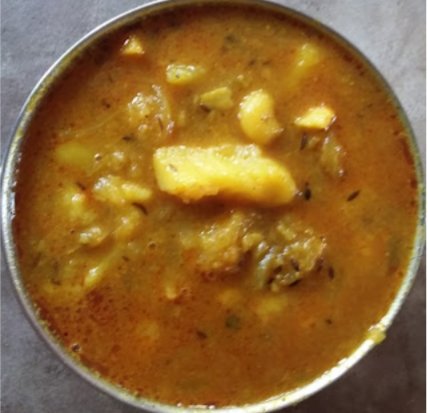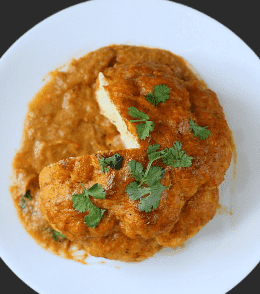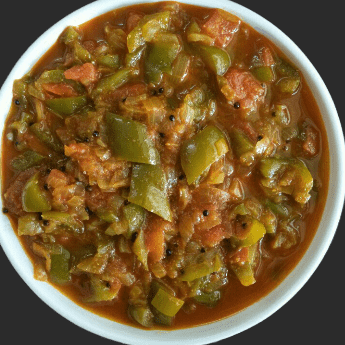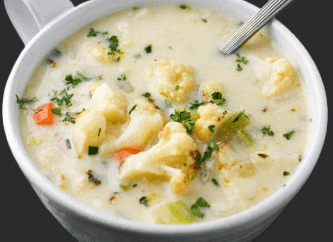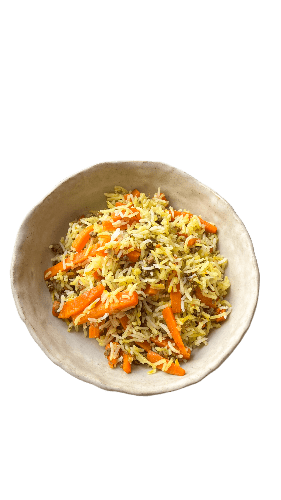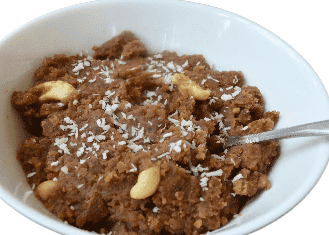Curd Rice
Introduction :
Curd Rice, known as “Thayir Sadam” in Tamil, is a staple in South Indian households. This dish is a perfect blend of cooked rice and yogurt, seasoned with a tempering of spices and herbs. It’s not just a meal; it’s a comfort food that embodies simplicity, health benefits, and cultural significance. In this extensive guide, we’ll delve into the history, preparation, variations, and serving suggestions for Curd Rice.
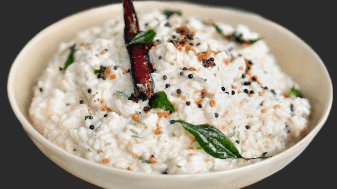
Historical and Cultural Context :
Curd Rice has been an integral part of South Indian cuisine for centuries. It is believed to have originated in the Tamil Nadu region and has since spread across the southern states, including Andhra Pradesh, Karnataka, and Kerala. Traditionally, Curd Rice is consumed at the end of a meal to aid digestion and cool the body, especially in the hot, humid climate of South India.
In Indian culture, yogurt is considered a symbol of purity and prosperity. It is often used in religious rituals and offered to deities. Curd Rice, combining the nutritional benefits of yogurt and rice, is not only a culinary delight but also a dish with deep cultural roots.
Ingredients :
To make authentic Curd Rice, we need fresh ingredients that balance flavors and textures. Here’s a detailed list:
Basic Ingredients :
- Rice: 1 glass (ideally short-grain rice like Sona Masuri)
- Yogurt (Curd): 2 cups (fresh and slightly tangy)
- Milk: 1/2 cup (optional, to adjust consistency)
- Salt: To taste
Tempering Ingredients :
- Oil: 1 tablespoon (or ghee for a richer flavor)
- Mustard Seeds: 1 teaspoon
- Urad Dal (Split Black Gram): 1 teaspoon
- Chana Dal (Split Bengal Gram): 1 teaspoon
- Green Chilies: 2, finely chopped
- Ginger: 1-inch piece, finely chopped
- Curry Leaves: 10-12 leaves
- Dry Red Chilies: 2, broken
- Asafoetida (Hing): A pinch
Garnishing Ingredients :
- Fresh Coriander Leaves: A handful, finely chopped
- Grated Carrots: 2 tablespoons (optional)
- Pomegranate Seeds: 2 tablespoons (optional)
- Fried Cashews: 10-12 (optional)
- Raisins: 1 tablespoon (optional)
Step-by-Step Preparation :
Step 1: Cooking the Rice
- Rinsing the Rice: Rinse 1 cup of rice thoroughly under running water until the water runs clear. This helps remove excess starch.
- Cooking the Rice: In a pot, add the rinsed rice and 2 cups of water. Cook the rice until soft and mushy. You can also use a pressure cooker or rice cooker for this step.
- Cooling the Rice: Once the rice is cooked, let it cool to room temperature. Spread it on a large plate or tray to cool faster and prevent clumping.
Step 2: Preparing the Yogurt Mixture
- Whisking Yogurt: In a expansive bowl, whisk 2 glasses of new yogurt until smooth. If the yogurt is too thick, add 1/2 cup of milk to achieve a creamy consistency.
- Mixing with Rice: Add the cooled rice to the whisked yogurt. Mix thoroughly until the rice is well-coated with yogurt. Include salt to taste and blend once more.
Step 3: Tempering the Curd Rice
- Warming Oil: In a little dish, warm 1 tablespoon of oil or ghee over medium warm.
- Adding Mustard Seeds: Once the oil is hot, add 1 teaspoon of mustard seeds and let them splutter.
- Adding Urad Dal and Chana Dal: Add 1 teaspoon each of urad dal and chana dal. Fry until they turn golden brown.
- Adding Spices: Add finely chopped green chilies, ginger, curry leaves, dry red chilies, and a pinch of asafoetida. Sauté for a minute until fragrant.
- Pouring Tempering: Pour this tempering over the rice and yogurt mixture. Blend delicately to disperse the hardening equally.
Step 4: Garnishing
- Chopping Coriander: Finely chop fresh coriander leaves and add them to the Curd Rice.
- Adding Carrots and Pomegranate: For a touch of color and texture, add grated carrots and pomegranate seeds.
- Adding Nuts and Raisins: For a richer taste, add fried cashews and raisins. These are optional but add a delightful crunch and sweetness.
Serving Suggestions :
Curd Rice can be served in various ways, depending on the occasion and preference. Here are a few suggestions :
- Traditional Style: Serve Curd Rice in a banana leaf for an authentic South Indian experience. Accompany it with pickle (mango or lime) and papad (crispy lentil wafer).
- Lunchbox Favorite: Pack Curd Rice in a lunchbox with a side of vegetable stir-fry or a simple dal (lentil curry). It makes for a wholesome and satisfying meal.
- Festive Spread: Include Curd Rice in a festive spread with other South Indian delicacies like sambar, rasam, and assorted vegetable curries.
- Cooling Summer Dish: Appreciate Curd Rice as a reviving summer dish. Serve it chilled with a drizzle of coconut oil and a sprinkle of grated coconut.
Variations :
Curd Rice is versatile, and you can customize it to suit your taste. Here are some popular variations:
- South Indian Style: Add a touch of grated raw mango for a tangy twist. You can also include finely chopped cucumber for extra freshness.
- Karnataka Style: In Karnataka, Curd Rice is often garnished with grapes. The sweet burst of grapes complements the tangy yogurt beautifully.
- Andhra Style: For a spicier version, add finely chopped green chilies and a generous amount of ginger in the tempering.
- Kerala Style: Include coconut milk along with yogurt for a creamier surfacee. Garnish with freshly grated coconut.
- Mango Curd Rice: Mix in small pieces of ripe mango for a sweet and tangy variation. This is especially popular during the mango season.
- Healthy Twist: Use brown rice or quinoa instead of white rice for a healthier alternative. Add vegetables like grated carrots, cucumbers, and bell peppers for added nutrition.
Tips and Tricks :
- Consistency: The consistency of Curd Rice can vary from thick to slightly runny. Adjust the amount of yogurt and milk to achieve your desired consistency.
- Fresh Yogurt: Use fresh and slightly tangy yogurt for the best flavor. Avoid using overly sour yogurt.
- Cooling Rice: Ensure the rice is completely cooled before mixing with yogurt to prevent curdling.
- Tempering: The tempering should be added to the rice while it’s still warm to infuse the flavors effectively.
- Serving Fresh: Curd Rice is best served fresh. If you need to store it, keep it refrigerated and consume within a day. Before serving, bring it to room temperature and add a little fresh yogurt if needed.
Nutritional Benefits :
Curd Rice is not only delicious but also packed with nutritional benefits:
- Probiotics: Yogurt is rich in probiotics, which promote healthy digestion and gut health.
- Calcium and Protein: Yogurt provides calcium and protein, essential for bone health and muscle repair.
- Cooling Effect: The combination of rice and yogurt has a cooling effect on the body, making it ideal for hot climates.
- Easily Digestible: Curd Rice is light on the stomach and easily digestible, making it a perfect meal for those recovering from illness or with digestive issues.
Conclusion :
Curd Rice is a timeless classic that holds a special place in South Indian cuisine. Its simplicity, versatility, and health benefits make it a beloved dish across generations. Whether you’re enjoying it as a comfort food at home or as part of a festive meal, Curd Rice never fails to satisfy.
Embrace the art of making Curd Rice with this detailed guide, and let this humble yet delightful dish bring comfort and joy to your dining table. Happy cooking!
